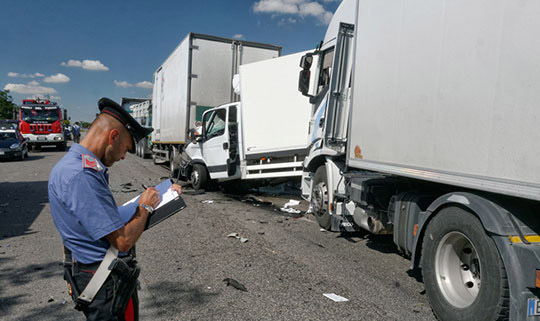
Speeding and/or unsafe following distance may have been a factor in this multi-vehicle collision.
Photo credit: FIORENTINI MASSIMO / Shutterstock.com
This article is from the July 2015 issue of the IC Safety newsletter. To view the full issue, visit the IC Safety archive.
Properly maintaining speed and following distance are crucial to safely operating a motor vehicle, but even the most experienced drivers commonly follow too closely or do not properly control their speed. More often than not, these behaviors are a result of poor habits or not concentrating on the task at hand. In fact, speeding was a factor in almost one third of fatal crashes in 2012, according to the Insurance Institute for Highway Safety.
The following best practices should be discussed with your drivers:
Always obey posted speed limits
This is especially true for drivers of commercial vehicles due to the increased stopping distance required by the vehicles' larger size and weight. Ultimately, a safe speed is one that is below the posted limit that allows the driver to easily control and stop the vehicle under current conditions, including traffic and weather.
For example, an alert driver under ideal conditions can perceive a hazard in 1.75 seconds and apply the brakes in about 1 second. The total stopping distance at 55 mph adds up to be a minimum of 419 feet, under ideal conditions. Drivers should also use caution and slow down when approaching highway or railroad crossings, especially while following school buses, hazmat trucks or other vehicles that are required to stop at rail crossings.
Increase your following distance
Maintaining a proper following distance is just as important as properly controlling speed and will ensure that the driver has enough time to slow down or stop the vehicle as necessary.
To best way to ensure you are maintaining a safe following distance is to use the time method. Drivers should look for an easily seen, stationary object that's in front of the vehicle they are following and begin counting in "Mississippi seconds" until their vehicle passes the same object. For example, at 55 mph, a light commercial vehicle should have at least 4 seconds of following distance while a fully loaded tractor trailer should have a minimum of 7 seconds.
In summary, training your drivers to properly maintain their speed and create safe following distances will go a very long way to prevent collisions.